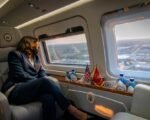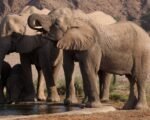In a move that has stirred both conservation circles and the tourism industry, Uganda has announced an increase in the fees for gorilla tracking within its borders. This decision reflects the country’s ongoing efforts to balance wildlife conservation with the economic realities of maintaining national parks and sanctuaries.
The Price of Preservation
The Uganda Wildlife Authority (UWA) has revised the cost of gorilla tracking permits from $700 to $800, a decision driven by the need to fund conservation initiatives. The increase is seen as a necessary step to ensure the protection and research of these majestic creatures and their habitat. The funds are earmarked for anti-poaching patrols, veterinary care, and community development projects that help alleviate the human-wildlife conflict.
This price hike comes at a critical time when conservation efforts are increasingly challenged by the pressures of human encroachment and the demands of a growing tourism industry. The UWA’s move is a bold statement on the value placed on the survival of one of the planet’s most endangered species.

The Impact on Tourism
The increase in tracking fees has sent ripples through the tourism sector, particularly among tour operators who fear the higher costs may deter potential visitors. The timing of the announcement, just ahead of the peak season, has compounded the issue, leaving operators scrambling to adjust their pricing structures and communicate changes to clients.
Tourism plays a significant role in Uganda’s economy, and gorilla tracking is a flagship attraction. Stakeholders are now grappling with the challenge of maintaining a competitive edge in the market while supporting the ethical imperative of conservation.
A Delicate Balance
The debate over the increased fees highlights the delicate balance between conservation funding and tourist affordability. While the need to support gorilla conservation is widely acknowledged, there is concern that too steep an increase could price out a significant portion of the market, potentially leading to a drop in visitor numbers and a consequent reduction in overall conservation funding.
The UWA’s decision underscores the complex interplay between environmental stewardship and economic sustainability. As the conversation continues, the hope is that a middle ground can be found—one that secures the future of Uganda’s gorillas while keeping the doors open to the world’s wildlife enthusiasts.








